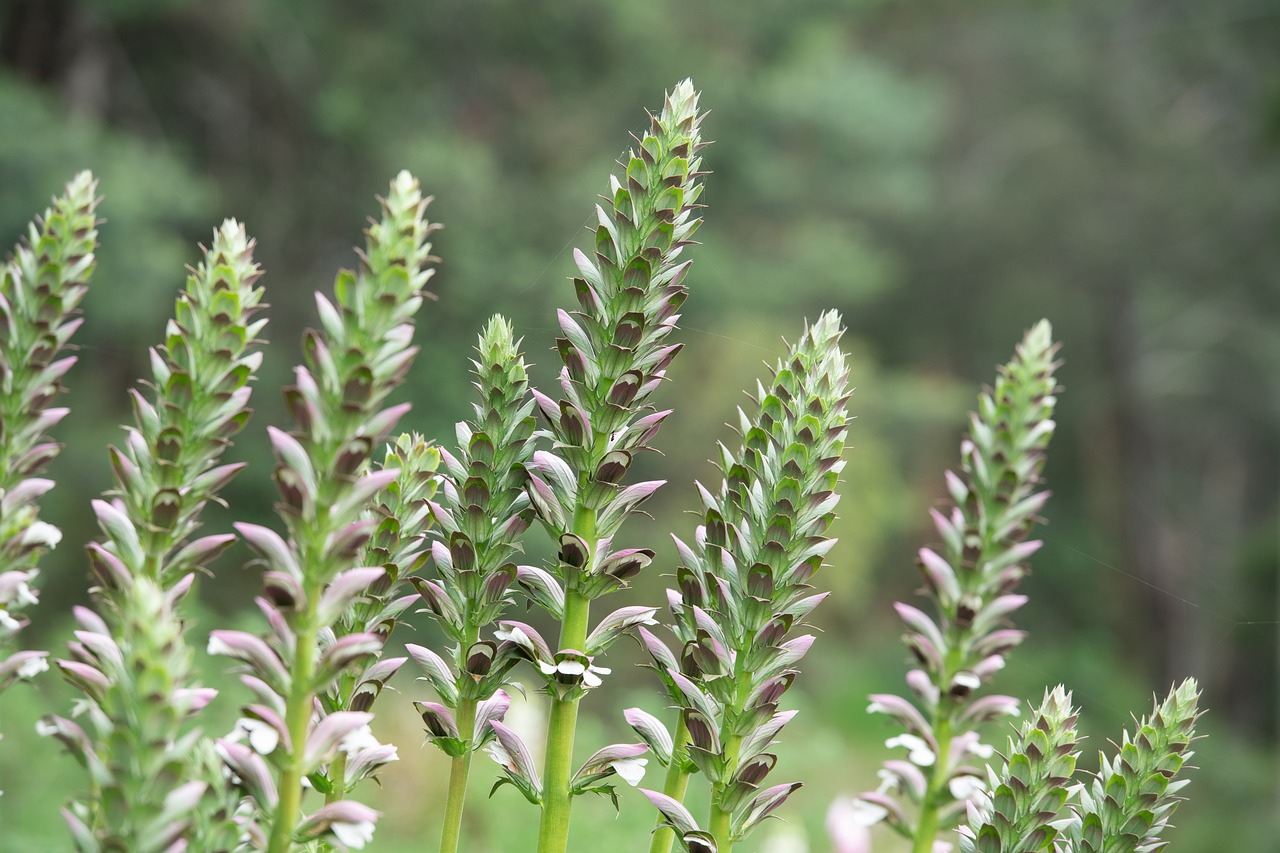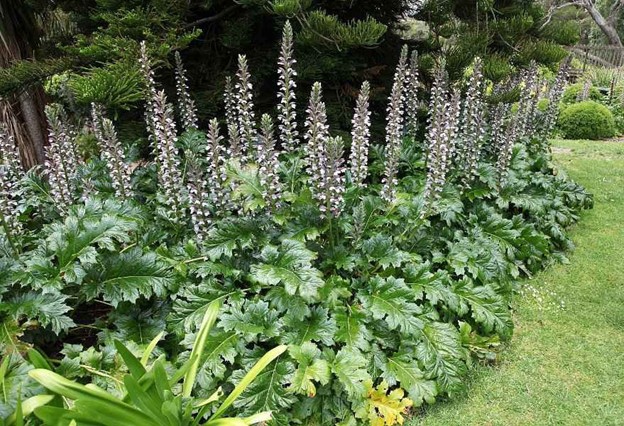You’ve probably heard the name in gardening circles or one time when you were looking for the best home plants. The truth is that there is more to Bear’s Breech than what you may already be used to. While it does add a positive vibe to your living space, there are many other ways you can find it useful in your garden other than to add beauty.
What is Bear’s Breech?
You already know it’s not an animal but a plant. And the flowering plant is one that you surely wouldn’t miss in the midst of other plants. It appears tall and spiky with flowers that range from creamy-white to mild pink covered in a purple-looking sheath.
Also known as the Acanthus mollis oak leaf, the plant grows perennially, meaning it can be found all year. And you won’t have to bother about replanting them once they die out. The use of the flowering plant dates back to the Greek and Roman Empires, where they play a significant role in the time’s art and craft.
More recently, they also have much use aside from decorative ornaments. The seeds, which are noticeable between May and November, are a rich source of protein for insects. So you should expect to find a lot of birds around your garden when the flower blooms.
Should you Plant Acanthus mollis?
There are many reasons why the Bear’s Breech is one of the favorite garden flowers in many homes. It could serve as a colorful addition to your landscape while also promoting proper ventilation in your space. It is also easy to cultivate and care for, which is another good reason it is popular.
If you do have any intentions of growing the plant in your yard, you want to get familiar with the planting procedure. But before I get into the details of that, let’s first talk about why you should consider flowers in your garden.
Good Way to Beautify
Still, on landscaping, the use of grasses and flowers has been one of the cheapest ways to beautify a yard. And you can find this to be the easiest thing to do if you have the right gardening skills. And for a vegetable like Acanthus mollis, there is no way you will go wrong in your outdoor décor if you do choose to go with it. There are useful tips here https://www.architectureartdesigns.com/how-to-beautify-your-outdoor-space-our-favorite-garden-design-ideas/ in ways to beautify your outdoor space.
Useful in Arts and Craft
Interested in some natural art pieces, you can find the colorful flowers of the Bear’s Breech to be an ideal use for your craft. For hundreds of years, it has served as a useful addition in many plant-themed creatives and could still find many practical applications in the present.
Medicinal Properties
Not sure if you’ve heard, but there is the belief that Acanthus mollis has numerous medicinal values that could help fight ailments. The roots and leaves are used as a powerful astringent where it could serve many functions. It could help in the treatment of diarrhea and also clean and heal open wounds.
Rich in high amounts of tannin and mucilage, you could also use it as a poultice to provide relief from burns and scalds. It could also be taken orally to help with stomach and digestive problems. You can also grind it in a paste and used it to treat joint and muscle-related pain.
How to Plant Bear’s Breeches in your Garden?
Planting flowers could be an excellent way to beautify your space and also give back to the environment. But whichever reason you choose to venture into gardening, you want to do it right. So it would be of benefit if you learn all there is to cultivating the vegetable successfully. And you want to start by understanding the proper growing condition.
Temperature and Climate
For starters, the Acanthus mollis thrive well in the open field where it gets direct exposure to sunlight. So you want to avoid planting close to shady areas of your garden. The flowers need to get enough light else; they won’t bloom properly. And for a perennial plant with stubborn root growth, you surely want the temperature levels to be ideal.
Soil and pH
The ideal soil for the Acanthus mollis is well-drained clay or sandy soil. This allows for proper aeration, which is needed to support the healthy growth of its stubborn roots. For a plant that is tolerant to drought, you won’t have to worry much about the soil’s pH. But it helps when preparing your garden to ensure that the soil conditions are optimum.
Water
You may not need to bother about watering the plant if you have an irrigation system in your garden. But it is necessary that you get the soil moist to maximize its nutrient content. You can check this website for more tips on watering garden flowers.
Planting Procedure
You could choose to propagate from seed or by cutting out a piece of the rootstalk for planting. The spacing of two to three feet apart is necessary to encourage proper growth. Known to be an invasive type of flower, you want to be sure about the number of seeds you use in your garden.
If the aim is to use it as an architectural ornament, the front of the building could be the ideal place to cultivate the Bear’s Breech. A linear arrangement that helps in outlining the building exterior could work for starters. It could be a good idea to check with a landscaping firm to determine how to go about your garden and outdoor plan.
With many different flower species, you want to talk with a gardener to learn about the different ones and find the right seeds.
Final Note
For a neater and greener design, you want to consider pairing your Bear’s Breech with other ornamental flowers. And you can find that there are many possible options for you to pick from. So it may be worth it to seek expert opinion when planning your landscape.



I’m starting a garden remodel this spring and I shall definitely be including these. They’re absolutely stunning!